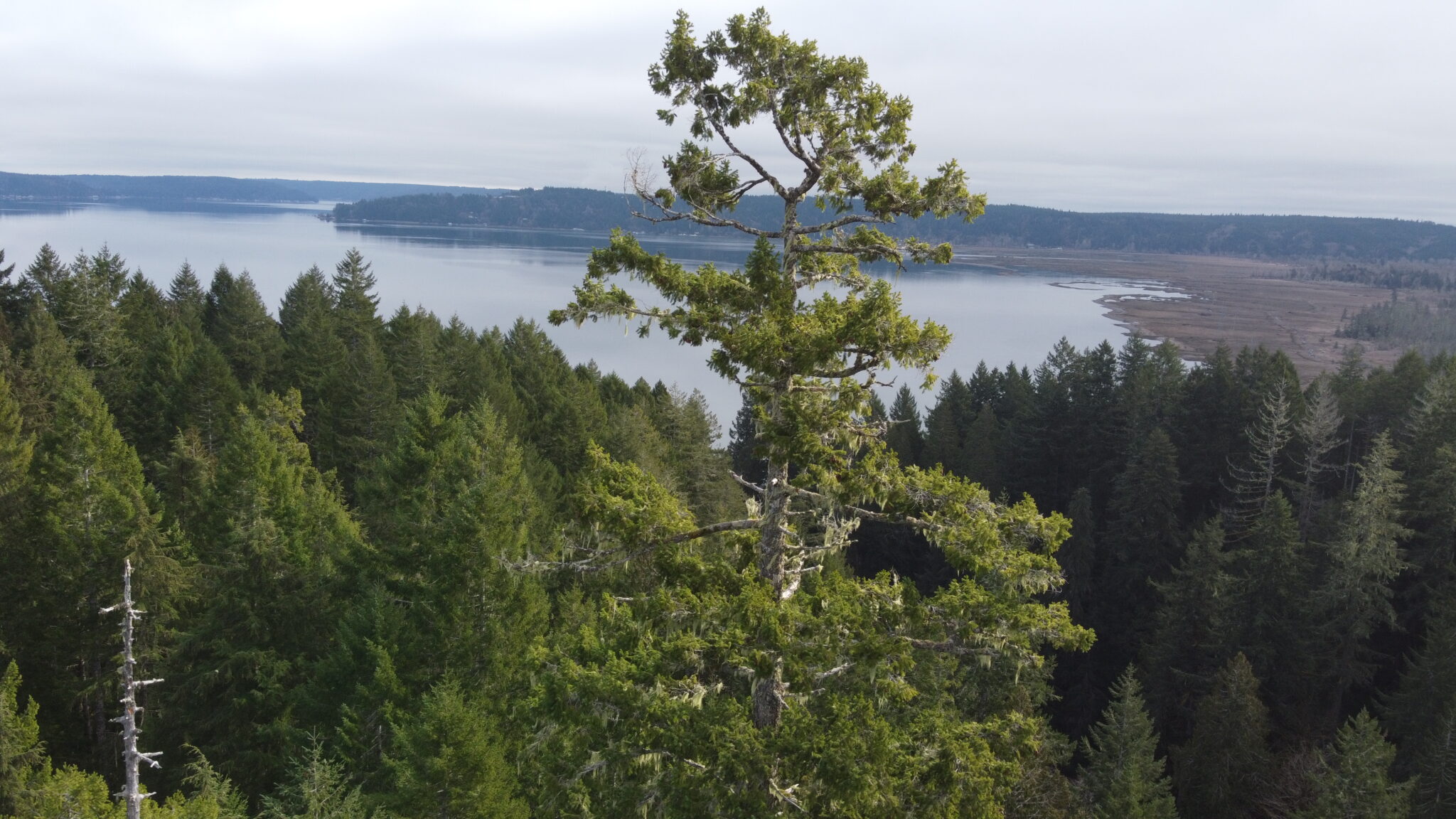
climate adaptation strategies
CLIMATE CHANGE POSES SIGNIFICANT CHALLENGES FOR FOREST OWNERS IN THE NORTHWEST
Recent analyses indicate that western Oregon and Washington will likely experience warmer temperatures, higher winter precipitation, reduced snowpack, and less precipitation in summer months. This means changes to the core conditions in which current forests thrive, heightened stress on fish and wildlife, and increased risks from insects, disease, and wildfire.
NNRG has developed a suite of resources for foresters and land managers to use in planning for the future of their forests. See below for climate adaptation case studies, video presentations, and other resources as part of this grant-funded project.
Climate Adaptation Case Studies
Take a look at some of the ongoing climate research projects from around the Pacific Northwest:
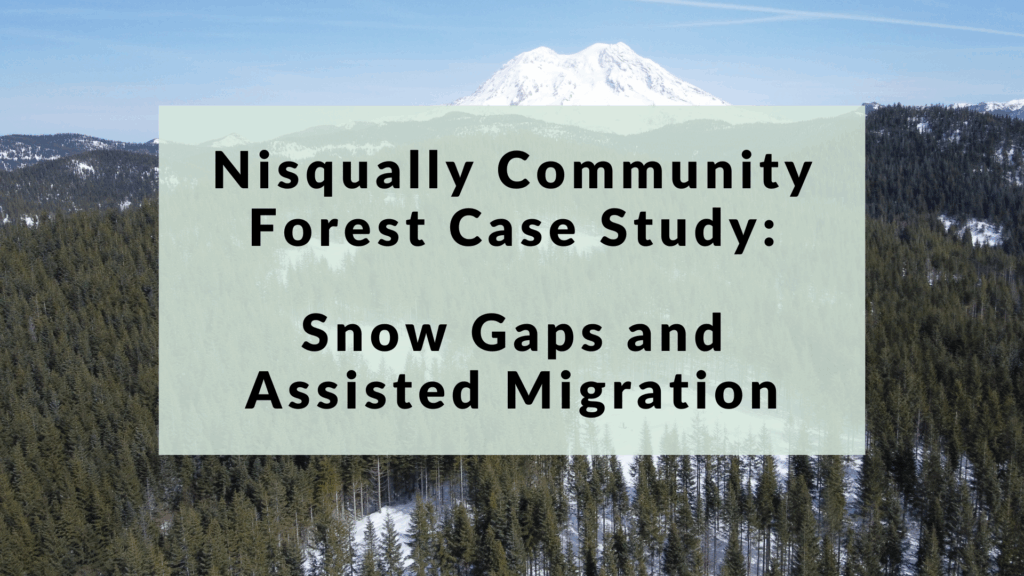
Learn how the Nisqually Community Forest is testing climate adaptation techniques to help forests retain moisture, extend snowmelt, and build long-term resilience to a changing climate.
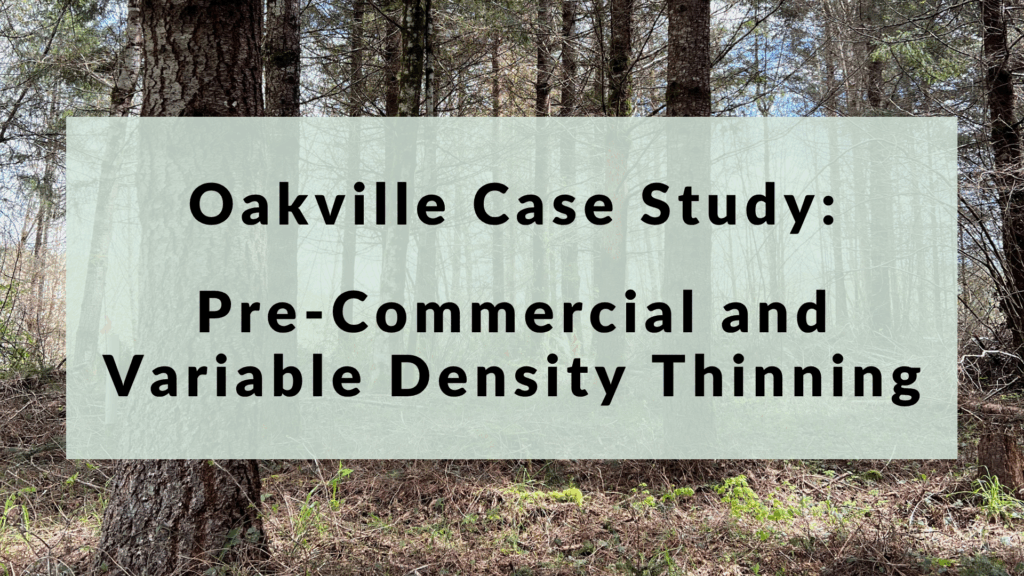
Discover how a 30-acre family forest near Oakville, Washington, is using pre-commercial and variable density thinning to build climate resilience, enhance wildlife habitat, and sustain long-term forest productivity.
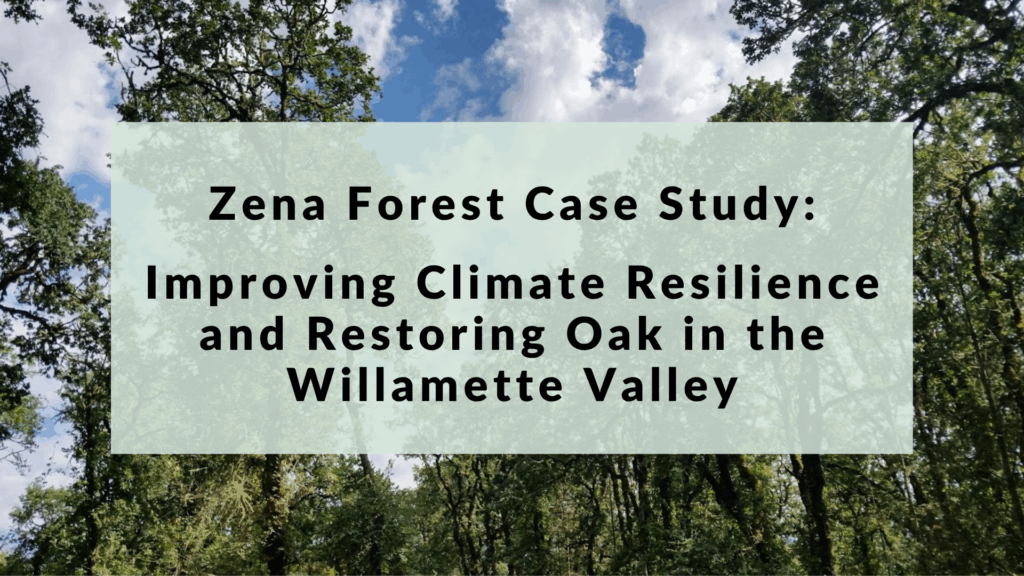
Explore how Zena Forest in Oregon’s Willamette Valley is restoring oak savannas and woodlands to build climate resilience.
More Climate Adaptation Resources:
Forest Adaptation Guide
NNRG and partners produced a white paper called Climate Adaptation Strategies for Pacific Northwest Forests.
The objective of this paper is to help natural resource professionals and forest owners understand climate change projections for western Oregon and Washington, the likely effects on forest ecosystems at lower elevations, and forest management strategies and tools you can use to help Pacific Northwest forests adapt to changing climate conditions.
View the illustrated overview
View the full guide
Listen to the radio interview
Forest Management Template
The best forest management plans take future climatic changes into account. This publication provides recommended additions to Northwest Oregon and Western Washington forest management plans to address the impacts of climate change. It includes sections of a management plan that are relevant to climate change, and represents a subset of the content in a standard forest management plan.
View the forest management plan template.
Video Series
In Fall 2019 NNRG hosted three workshops on Climate Adaptation Strategies for Pacific Northwest Forests to help foresters and land managers make informed decisions about adapting their management practices to meet their goals and sustain forests into the future. The video recordings of these lectures with presentation slides included are available via the two links below, sorted by state. You can also download a PDF of the slides associated with each presentation by clicking “Download presentation (PDF)” below each video.
Presentations Focused on Washington Forests
Climate Change: Current Understanding and What to Expect
Jessica Halofsky, USFS PNW Research Station
Download presentation slides
Climate Change Effects on Forests in the Pacific Northwest
David L. Peterson, USFS PNW Research Station
Download presentation slides
Planting Forest Hydrology for Climate Adaptation in the Pacific Northwest
Rolf Gersonde, Seattle Public Utilities
Download presentation slides
Planting Our Future Forests: Species & Seed Source Considerations
Andy Bower & Brad St. Clair, USFS PNW Research Station
Download presentation slides
Western Washington Wildfires: Managing the Risk
Dan Donato & Josh Halofsky, WA Dept. of Natural Resources
Download presentation slides
Silvicultural Strategies for Climate Change Adaptation
Derek Churchill, WA Dept. of Natural Resources
Download presentation slides
Climate Change Effects on Forest Insects & Diseases
Glenn Kohler, WA Dept of Natural Resources
Download presentation slides
Presentations Focused on Oregon Forests
Climate Change in the Northwest
Holly Prendeville, USDA Northwest Climate Hub
Download presentation slides
Climate Adaptation Tactics for Northwest Forests
Holly Prendeville, USDA Northwest Climate Hub
Download presentation slides
Forest Hydrology for Climate Adaptation
Ashley Coble, NCASI
Download presentation slides
Climate Change & Insect Pests of Trees
Christine Buhl, OR Department of Forestry
Download presentation slides
Fire Ecology in Westside Forests of the PNW
Matt Reilly, Humboldt State University
Download presentation slides
Silvicultural Strategies for Climate Change Adaptation
Derek Churchill, Washington DNR
Download presentation slides
Planting Our Future Forests: Species & Seed Source Considerations
Andy Bower & Brad St. Clair, USFS PNW Research Station
Download presentation slides
Case Studies
Below you’ll find three case studies describing how NNRG member forests are making changes in their forests to adapt to a changing climate.
The Not-So-Open Road: Road Decommissioning at Ellsworth Creek
Out With the Fir, In With the Oak: Oak Restoration at Zena Forest
Stossel Creek: Adaptive Forest Restoration Project
List of Resources
The following are helpful sources of information for addressing the effects of climate change on Pacific Northwest forests:
- Adaptation Partners – http://adaptationpartners.org/ – Researchers and resource managers provide scientific information on climate change effects and adaptation for specific Northwest and Intermountain West regions.
- Adaptation Workbook – https://adaptationworkbook.org/
- AdaptWest – https://adaptwest.databasin.org/ – AdaptWest is a spatial database designed to help land management agencies and other organizations implement strategies that promote resilience, protect biodiversity, and conserve and enhance the adaptation potential of natural systems in the face of a changing climate.
- Climate Resilience Guide for Small Forest Landowners in Western Washington – https://cig.uw.edu/projects/small-forest-landowner-adaptation-guidance/ – A western Washington-specific guide for small forest landowners that describes the most immediate climate impacts on forests and potential actions landowners can take to increase climate resilience.
- Climate Change Resource Center (CCRC) – https://www.fs.usda.gov/ccrc/ – US Forest Service collection of resources and tools.
- Climate Impact Groups at UW (CIG) – https://cig.uw.edu/ – Leading researchers and providers of primary science and decision making tools.
- Climate Impact Research Consortium at OSU (CIRC) – https://pnwcirc.org/ – A climate science-to-action team providing research, decision making tools for communities, and developer of analytic tools resource managers and land use planners.
- Data Science – www.datascienceprograms.com/learn/how-data-science-can-help-fight-climate-change
- Forest Adaptation Network – https://www.nnrg.org/climateadaptation/forest-adaptation-network/ – A Puget Sound-based peer learning group of forest adaptation professionals.
- NW Climate Hub – https://www.climatehubs.oce.usda.gov/hubs/northwest – USDA portal for science-based Northwest-specific information and technologies to assist with climate-informed decision making.
- NW Climate Toolbox – https://climatetoolbox.org/ – Suite of online tools to put a variety of climate data and information in reach of organizations and people for site specific locations, including: historical climate variability, temperature and precipitation normal, streamflow projections, climate projections, and data for Tribal Lands.
- Seedlot Selection Tool – https://seedlotselectiontool.org/sst/ – Web-based mapping application that can be used to map current or future climates based on different climate change scenarios to inform the selection of seedlings for tree planting as part of reforestation and restoration efforts.
- U.S. Climate Resilience Toolkit – https://toolkit.climate.gov/ – Portal for general information about change for many audiences.
Funding & Support
Funding and support for this project come from Western Sustainable Agriculture and Education (Western SARE).
Western Sustainable Agriculture and Education is supporting the research and training provided through this project with grant #EW16-021 – Climate Adaptation Training for Foresters.
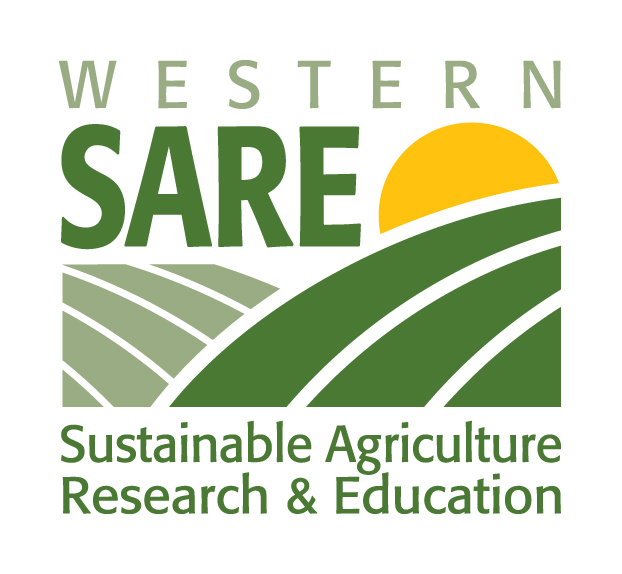
Additional resources on climate adaptation and other topics are available in the NNRG Resource Library.
